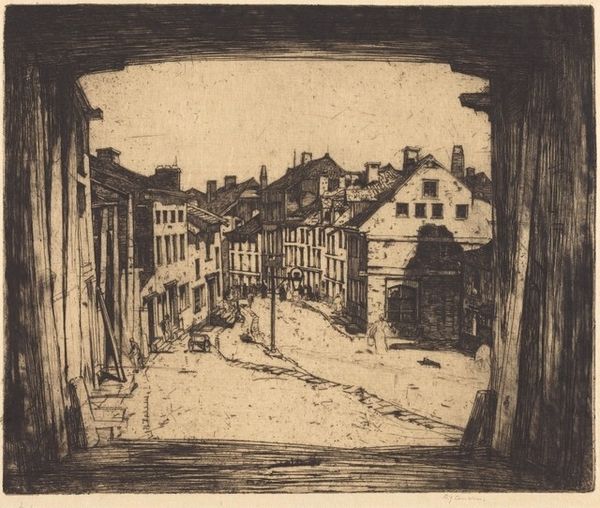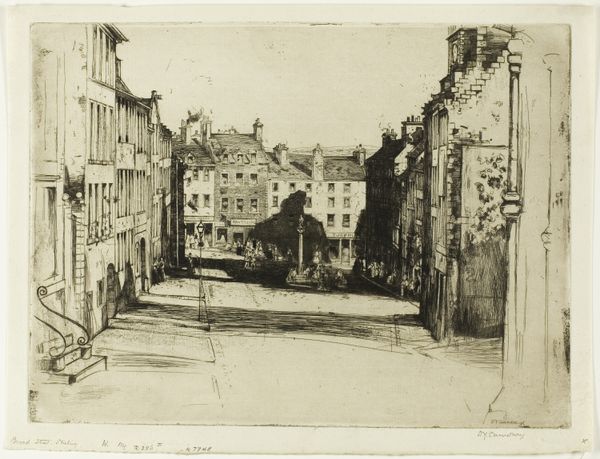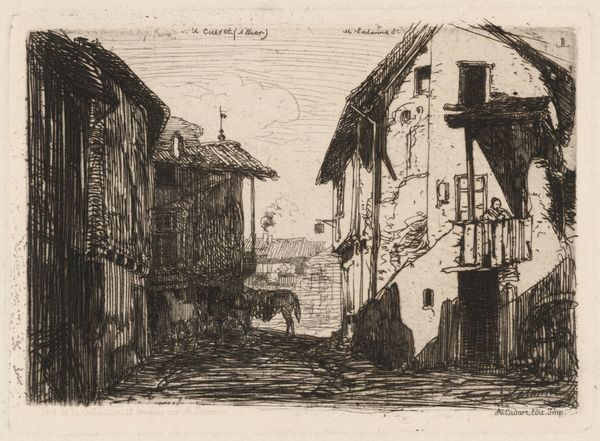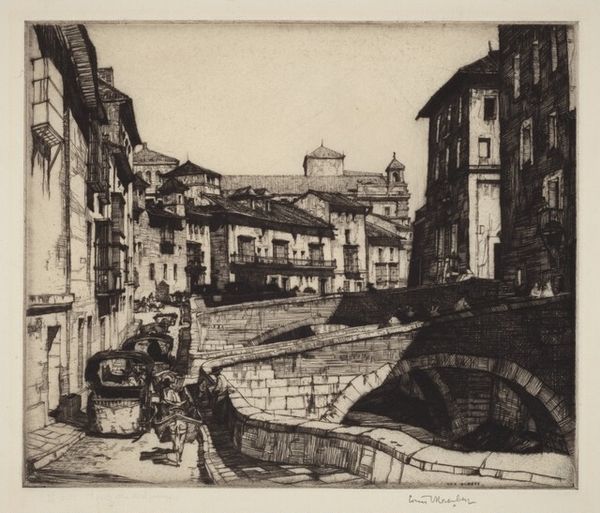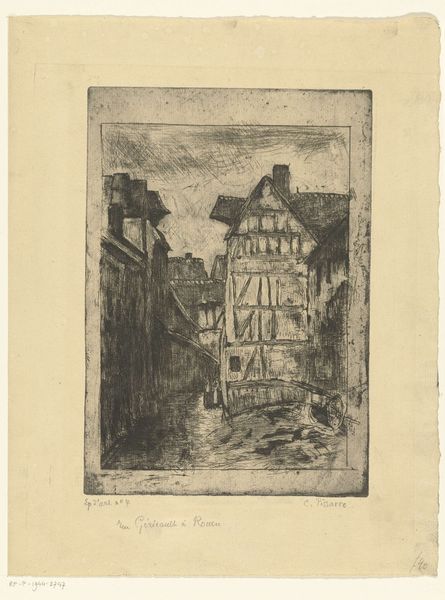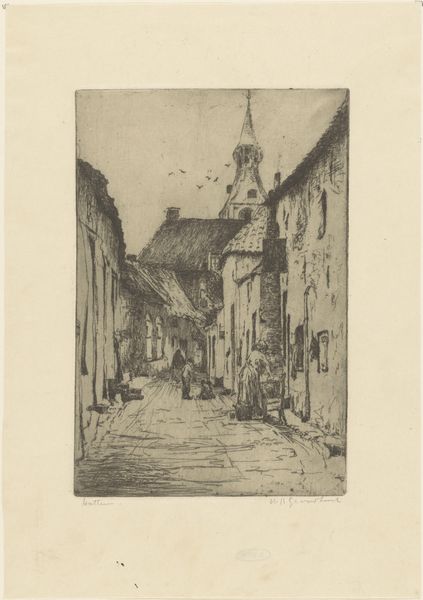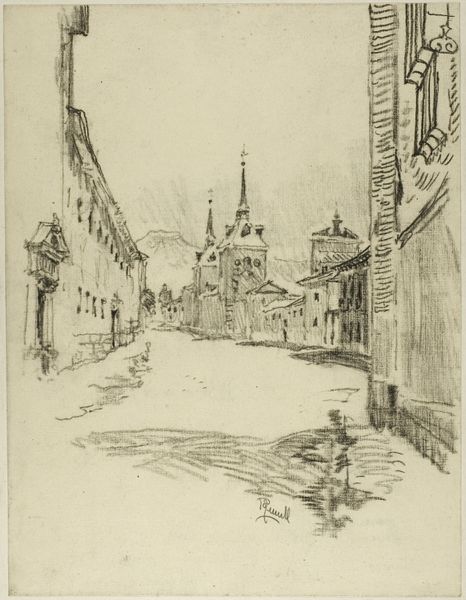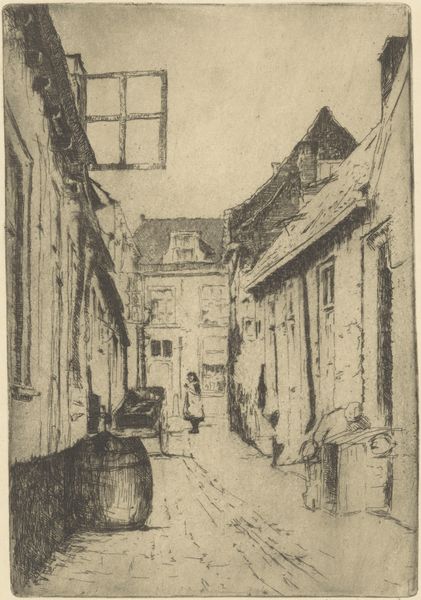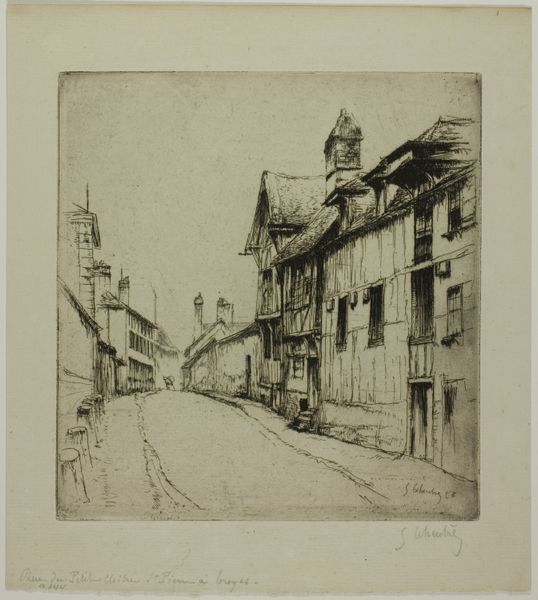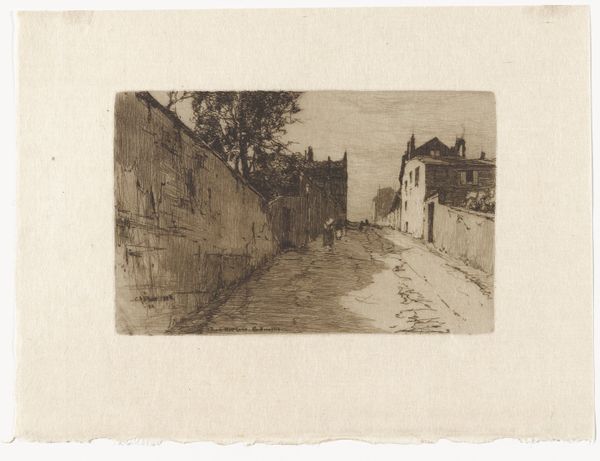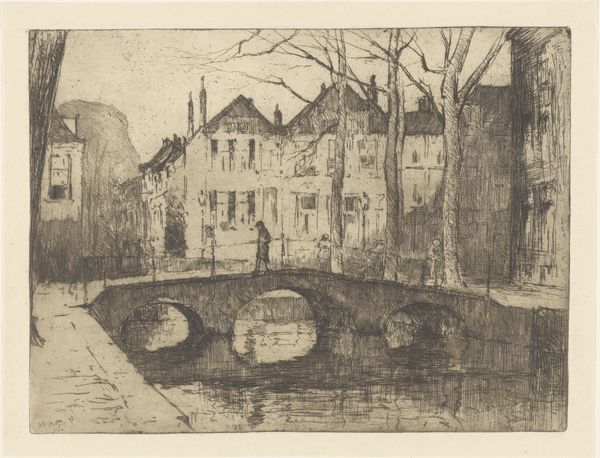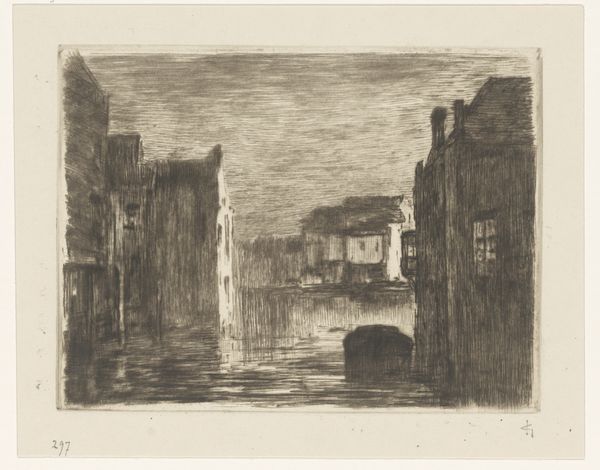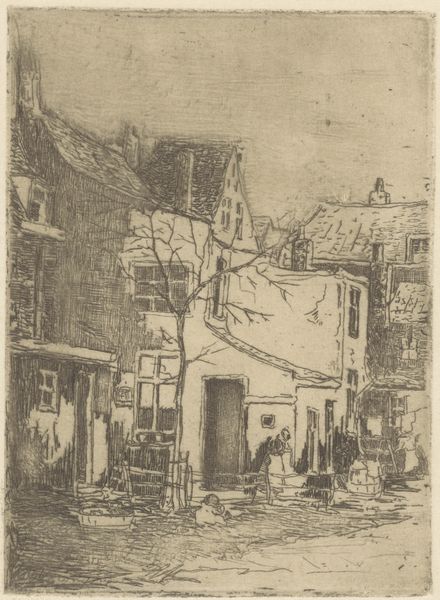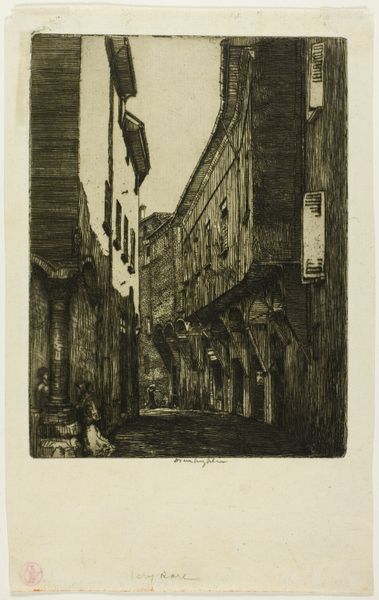
Old La Roche, plate seven from the Belgian Set 1907
0:00
0:00
drawing, print, etching, paper
#
drawing
#
ink drawing
# print
#
etching
#
landscape
#
paper
#
cityscape
#
academic-art
#
realism
Dimensions: 217 × 255 mm (image/plate); 264 × 404 mm (sheet)
Copyright: Public Domain
Curator: Here we have "Old La Roche, plate seven from the Belgian Set," an etching on paper created in 1907 by David Young Cameron, now residing here at the Art Institute of Chicago. Editor: It's so contained, so precisely framed. The high contrast creates a quiet intensity, but something about the textures almost feels claustrophobic. It invites you in, but on its own terms. Curator: Note the stark contrast, typical of Cameron’s work, meant to evoke a deep sense of place. The dark framing acts almost like a stage, doesn't it? It’s a conscious manipulation of visual symbolism, reminiscent of much older emblem traditions. Editor: I'm seeing how this framing also feels like peering into the past, as though we’re meant to see not just La Roche but its enduring place within Belgian memory. Was Cameron intentionally using this compositional style to highlight particular urban struggles of the time? Curator: It's probable he wanted to show enduring historical strength by representing this seemingly commonplace scene in such monumental format, but, also he uses a symbolical technique to get you into a spiritual meaning behind a building or setting like these ones. I think there are lots of elements that reminds us on religion. Editor: Religion definitely plays a role, but seeing La Roche in the early 20th century brings forth a complex social picture. This wasn't simply a neutral, observed setting, it was a place teeming with potentially exploited labor and burgeoning class conflict. The monumentality, perhaps, acts as a visual gloss. Curator: I disagree about it being a visual gloss at all. The artist wants the viewer to think deeply about each one of these symbols. I guess it’s like, where is God here? Where is transcendence and inner peace, inside those homes? It feels that the etching suggests an absence and it shows it’s the observer who must fill the spiritual place with the divine one. Editor: Okay, I can certainly see your interpretation! What this does for me is to underscore how art encourages and needs varied interpretations to reveal fuller cultural and political meanings. Curator: Yes, certainly! It's been enlightening to consider the dualistic nature of familiar and foreign that the work offers to a contemporary audience, now, decades away from its original symbolism and social contexts. Editor: Absolutely. The layers within this relatively small piece certainly do speak to larger intersectional concerns beyond its surface.
Comments
No comments
Be the first to comment and join the conversation on the ultimate creative platform.
